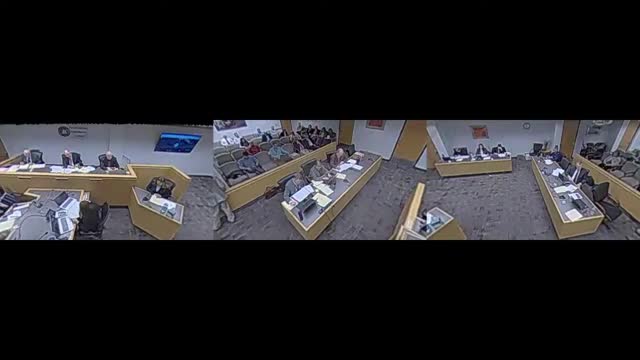Utility Insurer Examines Wildfire Liability Impact on Premium Rates
March 23, 2025 | Utah Public Service Commission, Utah Subcommittees, Commissions and Task Forces, Utah Legislative Branch, Utah
This article was created by AI summarizing key points discussed. AI makes mistakes, so for full details and context, please refer to the video of the full meeting. Please report any errors so we can fix them. Report an error »

In a pivotal government meeting held on March 23, 2025, discussions surrounding the impact of wildfire liability on insurance premiums took center stage, particularly in relation to the ongoing James case. Experts highlighted that the increasing frequency of wildfires and associated litigation risks are reshaping the landscape of excess liability insurance (ELI) for utility companies across the West.
During the session, it was confirmed that insurers assess risks, including wildfire-related liabilities, when determining premiums. A significant point raised was the potential ripple effect of large jury verdicts, such as those stemming from the James case, which could influence insurance rates not just for the involved utility but for the entire industry. One expert noted, “If an insured utility is found liable for causing a major wildfire event, it would affect the ELI premiums for the entire industry.”
However, the discussion also revealed a nuanced understanding of how these verdicts are treated by insurers. While the James case has reached certain milestones, it remains unresolved, leading to the conclusion that its implications on insurance premiums are still premature. “It is very much an informative type of event to insurers,” one participant stated, emphasizing that without a conclusive outcome, the full impact on premiums cannot yet be assessed.
The meeting underscored the complexity of linking past conduct and legal outcomes to future insurance costs. While settled claims have been shown to affect premiums, the ongoing nature of the James litigation complicates direct correlations. “The claims that were settled... do contribute to our premium,” an expert clarified, but the unresolved status of the James case means its influence is still uncertain.
As the meeting concluded, it was clear that the intersection of legal liability and insurance pricing remains a critical issue for utility companies, with the potential for significant industry-wide implications as the James case progresses. The discussions highlighted the need for ongoing monitoring of legal outcomes and their effects on insurance markets, setting the stage for future evaluations of risk and cost in the utility sector.
During the session, it was confirmed that insurers assess risks, including wildfire-related liabilities, when determining premiums. A significant point raised was the potential ripple effect of large jury verdicts, such as those stemming from the James case, which could influence insurance rates not just for the involved utility but for the entire industry. One expert noted, “If an insured utility is found liable for causing a major wildfire event, it would affect the ELI premiums for the entire industry.”
However, the discussion also revealed a nuanced understanding of how these verdicts are treated by insurers. While the James case has reached certain milestones, it remains unresolved, leading to the conclusion that its implications on insurance premiums are still premature. “It is very much an informative type of event to insurers,” one participant stated, emphasizing that without a conclusive outcome, the full impact on premiums cannot yet be assessed.
The meeting underscored the complexity of linking past conduct and legal outcomes to future insurance costs. While settled claims have been shown to affect premiums, the ongoing nature of the James litigation complicates direct correlations. “The claims that were settled... do contribute to our premium,” an expert clarified, but the unresolved status of the James case means its influence is still uncertain.
As the meeting concluded, it was clear that the intersection of legal liability and insurance pricing remains a critical issue for utility companies, with the potential for significant industry-wide implications as the James case progresses. The discussions highlighted the need for ongoing monitoring of legal outcomes and their effects on insurance markets, setting the stage for future evaluations of risk and cost in the utility sector.
View full meeting
This article is based on a recent meeting—watch the full video and explore the complete transcript for deeper insights into the discussion.
View full meeting

